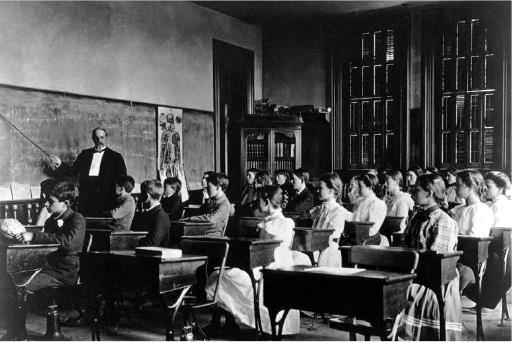Culture and RecreationEducation |
When were the first schools established? |
The first formal education began shortly after the development of writing (c. 3000 B.C.), when both the Sumerians (who had developed a cuneiform system of picto-graphics) and the Egyptians (who developed hieroglyphics) established schools to teach students to read and write the systems. After the development of the first alphabet (between 1800 and 1000 B.C.) by Semitic people in Syria, religious schools were set up. Priests taught privileged boys to read sacred Hebrew writings (the Torah). The first school that was open to everyone, not just the upper classes, may well have been that established by Chinese philosopher Confucius (551–479 B.C.), who taught literature and music, conduct, and ethics to anyone who wanted to learn.
The western model of education is based on the ancient Greek schools, which were founded about the fifth century B.C. In the city-state of Sparta, boys were not only trained for the military; they also learned reading and writing and studied music. In Athens, boys learned to read and write, memorized poetry, and learned music as well as trained in athletics. In the second half of the fifth century B.C., the Sophists (ancient Greek teachers of rhetoric and philosophy) schooled young men in the social and political arts, hoping to mold them into ideal statesmen.

